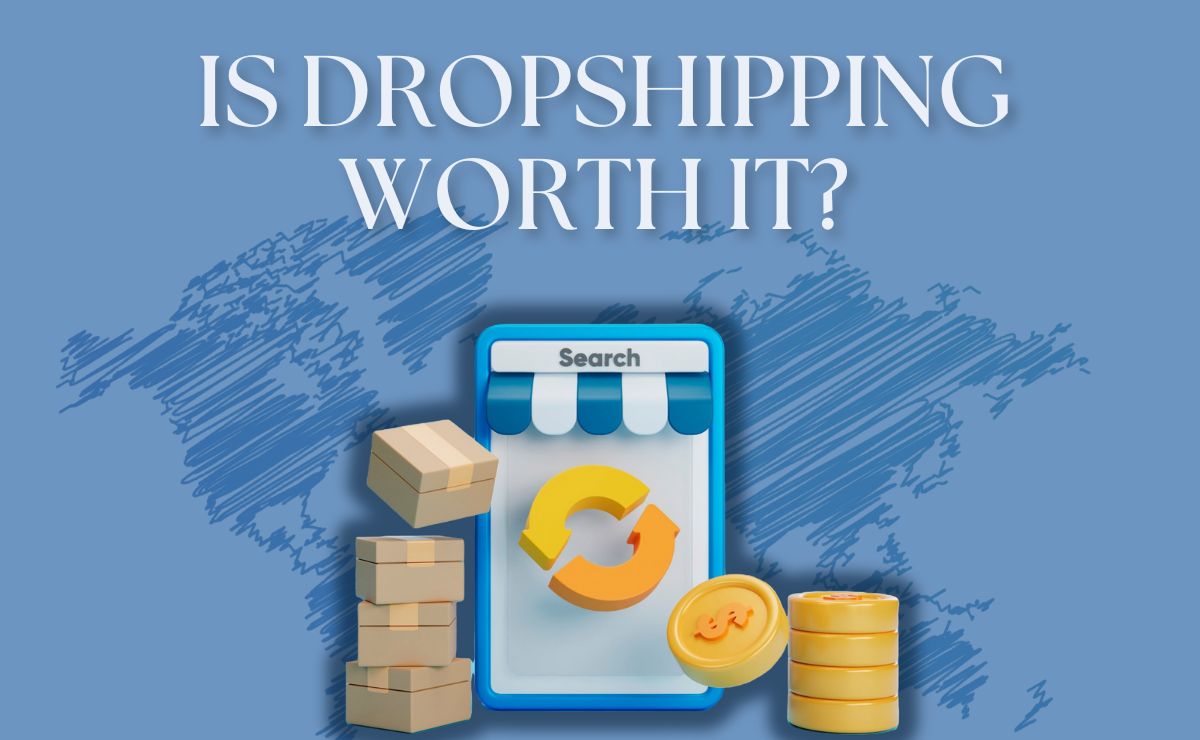
How to Build a Successful Dropshipping Empire from Scratch
- 2024-11-07
-
2

Dropshipping is a business model where an online retailer does not keep the products it sells in stock. Instead, when a store sells a product, it purchases the item from a third party and has it shipped directly to the customer. As a result, the merchant never sees or handles the product. The biggest advantage of dropshipping is that you don't have to worry about inventory management or shipping logistics. However, there are also some disadvantages to consider, such as lower profit margins and less control over the fulfillment process.
To start a dropshipping business, you first need to choose a niche and find profitable products to sell. This involves conducting market research and identifying trends in order to find products that have high demand and low competition. There are various tools and resources available that can help you with this process, such as Google Trends, Amazon Best Sellers, and social media platforms.
Choosing the Right Niche: Finding Profitable Products to Sell
Choosing the right niche is crucial for the success of your dropshipping business. It's important to find a niche that has enough demand but not too much competition. You want to find a balance where there is enough demand for your products, but not so much competition that it becomes difficult to stand out.
To identify profitable products, you can start by looking at best-selling products on popular e-commerce platforms like Amazon or eBay. You can also use tools like Google Trends to see if there is a growing interest in certain products or niches. Additionally, you can use keyword research tools like Google Keyword Planner or SEMrush to see what keywords people are searching for related to your niche.
Researching Your Competition: Analyzing the Market and Identifying Trends
Researching your competition is an important step in building a successful dropshipping business. By analyzing the market and identifying trends, you can gain insights into what products are popular and what strategies your competitors are using.
To analyze the market, you can start by looking at your competitors' websites and social media profiles. Take note of the products they are selling, their pricing strategies, and their marketing tactics. You can also use tools like Google Alerts or Mention to monitor mentions of your competitors online.
To identify trends, you can use tools like Google Trends or social media listening tools to see what topics or products are gaining popularity. You can also follow industry blogs and forums to stay up-to-date with the latest trends in your niche.
Building Your Online Store: Creating a Professional and User-Friendly Website
Having a professional and user-friendly website is essential for the success of your dropshipping business. Your website is the face of your brand and the main point of contact with your customers, so it's important to make a good impression.
To create a website for your dropshipping business, you can use e-commerce platforms like Shopify or WooCommerce. These platforms provide pre-designed templates that you can customize to fit your brand. You can also use website builders like Wix or Squarespace if you prefer more control over the design process.
When designing your website, it's important to keep it clean and easy to navigate. Use high-quality images and clear product descriptions to showcase your products. Make sure your website is mobile-friendly, as more and more people are shopping on their smartphones.
Setting Up Your Dropshipping System: Finding Reliable Suppliers and Managing Inventory
Finding reliable suppliers is crucial for the success of your dropshipping business. You want to work with suppliers who can provide high-quality products, ship them quickly, and offer competitive prices.
To find suppliers, you can start by searching on popular e-commerce platforms like AliExpress or Alibaba. These platforms have a wide range of suppliers from all over the world. You can also attend trade shows or reach out to manufacturers directly to establish relationships with suppliers.
Once you have found suppliers, it's important to vet them to ensure they meet your standards. You can ask for samples of their products to test their quality. You can also ask for references or read reviews from other dropshippers who have worked with them.
Managing inventory and fulfilling orders is another important aspect of running a dropshipping business. You need to keep track of your inventory levels and ensure that your suppliers have enough stock to fulfill orders. You can use inventory management software or apps to automate this process and avoid stockouts.
Marketing Your Products: Strategies for Driving Traffic and Increasing Sales
Marketing is essential for driving traffic to your website and increasing sales. There are various strategies you can use to market your products, such as search engine optimization (SEO), social media marketing, influencer marketing, and email marketing.
To drive traffic to your website, you can optimize your website for search engines by using relevant keywords in your product descriptions and meta tags. You can also create content that is valuable and informative for your target audience, such as blog posts or videos.
Social media marketing is another effective strategy for promoting your products. You can create social media profiles for your business and post regularly to engage with your audience. You can also run paid advertising campaigns on platforms like Facebook or Instagram to reach a wider audience.
Influencer marketing is a popular strategy where you collaborate with influencers in your niche to promote your products. Influencers have a loyal following and can help you reach a larger audience and build trust with potential customers.
Email marketing is a powerful tool for nurturing relationships with your customers and driving repeat sales. You can collect email addresses from your website visitors and send them targeted emails with special offers or product recommendations.
Optimizing Your Conversion Rate: Tips for Improving Your Website's Performance
Optimizing your website's performance is crucial for converting visitors into customers. A high conversion rate means that a larger percentage of your website visitors are making a purchase, which leads to higher sales and profits.
To improve your website's conversion rate, you can start by optimizing your product pages. Make sure your product descriptions are clear and persuasive, and include high-quality images or videos to showcase your products. You can also add customer reviews or testimonials to build trust with potential customers.
Another important aspect of optimizing your website's performance is improving its loading speed. A slow-loading website can lead to higher bounce rates and lower conversion rates. You can use tools like Google PageSpeed Insights or GTmetrix to test your website's loading speed and make improvements.
You should also make sure your website is easy to navigate and has a clear call-to-action. Use clear and intuitive menus, and make it easy for customers to find the information they need or make a purchase. You can also use exit-intent pop-ups or abandoned cart emails to recover lost sales.
Providing Excellent Customer Service: Building Trust and Loyalty with Your Customers
Providing excellent customer service is crucial for building trust and loyalty with your customers. When customers have a positive experience with your brand, they are more likely to become repeat customers and recommend your products to others.
To provide excellent customer service, you should be responsive and helpful when customers have questions or issues. You can offer multiple channels for customer support, such as live chat, email, or phone support. You should also have clear policies in place for returns or exchanges, and make it easy for customers to contact you.
Building trust with your customers is also important for the success of your dropshipping business. You can build trust by being transparent about your business practices, such as shipping times or product quality. You can also showcase customer reviews or testimonials on your website to show that other people have had positive experiences with your brand.
Scaling Your Business: Strategies for Growing Your Dropshipping Empire
Scaling your business is important for long-term success and profitability. As your dropshipping business grows, you need to find ways to increase your sales and expand your reach.
One strategy for scaling your business is to add more products to your catalog. By offering a wider range of products, you can attract a larger audience and increase your chances of making a sale. You can also consider expanding into new markets or targeting new customer segments.
Another strategy for scaling your business is to optimize your operations and automate repetitive tasks. You can use software or apps to automate tasks like order fulfillment or inventory management. This allows you to focus on more strategic aspects of your business, such as marketing or customer service.
You can also consider partnering with other businesses or influencers to reach a wider audience. By collaborating with complementary brands or influencers in your niche, you can leverage their existing customer base and increase your brand visibility.
Avoiding Common Pitfalls: Tips for Overcoming Challenges and Staying Ahead of the Game
Dropshipping is not without its challenges, and it's important to be aware of common pitfalls and how to overcome them. Some common challenges in dropshipping include low profit margins, shipping delays, or issues with product quality.
To overcome these challenges, it's important to choose reliable suppliers who can provide high-quality products and ship them quickly. You should also set realistic pricing strategies that take into account your costs and profit margins. It's also a good idea to have backup suppliers in case one supplier is unable to fulfill an order.
Staying ahead of the game in dropshipping requires staying up-to-date with the latest trends and constantly adapting your strategies. You should regularly monitor your competitors and industry trends to identify new opportunities or potential threats. You should also be open to experimenting with new marketing tactics or product offerings to see what works best for your business.
Taking Your Dropshipping Business to the Next Level
In conclusion, dropshipping can be a profitable and rewarding business model if done right. By choosing the right niche, researching your competition, building a professional website, finding reliable suppliers, marketing your products, optimizing your website's performance, providing excellent customer service, scaling your business, and avoiding common pitfalls, you can take your dropshipping business to the next level and achieve long-term success. It's important to stay committed and continuously learn and adapt to stay ahead of the game in this competitive industry.
like?









